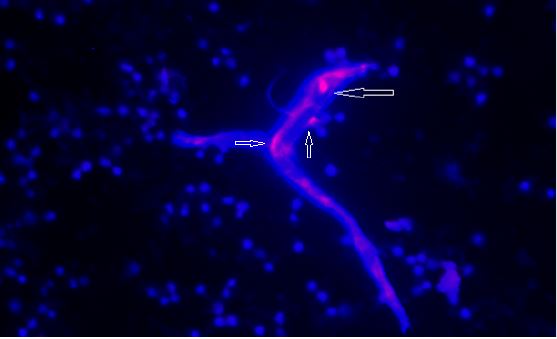Biography
Interests
Parvin Mehdipour
Department of Medical Genetics, School of Medicine, Tehran University of Medical Sciences, Iran
*Correspondence to: Parvin Mehdipour, Department of Medical Genetics, School of Medicine, Tehran University of Medical Sciences, Iran.
Copyright © 2018 Parvin Mehdipour. This is an open access article distributed under the Creative Commons Attribution License, which permits unrestricted use, distribution, and reproduction in any medium, provided the original work is properly cited.
Cell, is an initiator of the individuals ‘life with many hidden and unmasked facts and pathways which are cooperative with their contiguous environments. Moreover, Cancer Cells are characterized with the puzzling strategy which requires reinstatement in cancer research. So, bridging Cell Biology to Cancer is a leading channel to the translational research. In fact, the triangle of ‘Cancer/Cell/Biology’ consists of many layers of facts with cooperative functions. Eventually, the functional cooperation has negative impact on the health status of cancer patients. Conclusively, Cancer Biology is a brief explanation of our aim and task in cancer research with its personalized applicability in cancer- clinics and management.
Cancer initiation and progression require the fundamental and comprehensive insights to trace the key cellular elements through a cooperative manner between functional and molecular paradigms. Taking an urgent action, is an essential step in tumor biology and genetic which guarantee the success in cancerdiagnosis, prognosis, prediction and prevention by accessing the fundamental roots in neoplasms. Moreover, the cancer patients’ benefit is directly related to the multi-disciplinary strategies conducted by Surgeon, Oncologists, Radiotherapist, Psychologists and Cancer Scientists.
The influential approaches are ‘an early detection’, by considering the phrase of ‘Soon will be late’. So, in addition to the molecular test(s), the cell-based insight is capable to explore and unmask the heterogenic pattern of the neoplastic cells. Predisposition is a hidden fact in cancer world with a remarkable significant impact on the health status and quality of the individuals’ life. As an example, neoplasms initiate with the predisposing factor by an inherited polymorphic single nucleotide from an ancestral line and is capable to be passed through the pedigree to next generation(s). The D1853N polymorphism in Ataxia telangiectasia mutated (ATM) gene is a directing passage to trace predisposition either in cancer patients or in the apparently healthy individuals. This polymorphism has been, previously, explored in brain tumors [1], breast cancer [2], and in the patient affected with other solid tumors and hematopoietic disorders including leukaemias (unpublished data). Besides, the complexity of evolution is related to the occurrence of further molecular alteration (s) within exon 39 and/or the related intronic region through the course of disease. These events are reported as three-hit hypothesis in astrocytoma [1], and five-hit hypothesis in breast cancer [3]. Furthermore, the importance of ATM gene in brain and breast tumors has been recently reviewed [4].
Detection of the Circulating Tumor Cells (CTCs) is revealed to be non-invasive, rapid, and capable of: 1) Tracing the cellular heterogenic and diversity patterns with adequate cell enumeration, as a single-based analytical strategy; 2) Providing the manner of evolution through the journey from tumor to the host; and 3) Estimation of the prognostic value for further clinical managements. Through such approaches, an applicable clinical management in cancer diagnosis and an influential personalized therapy would be possible.
In conclusion, compromising between functional and molecular paradigms leads to: 1) Improve the cancer managements; 2) Provide the predisposing/predicting/prognostic/preventive guidelines. However, the translational research is required to be fit and applicable for each population; and the rare-neoplasms, molecular and functional alterations are required to be taken into the prompt consideration and care as well.

Bibliography

Hi!
We're here to answer your questions!
Send us a message via Whatsapp, and we'll reply the moment we're available!